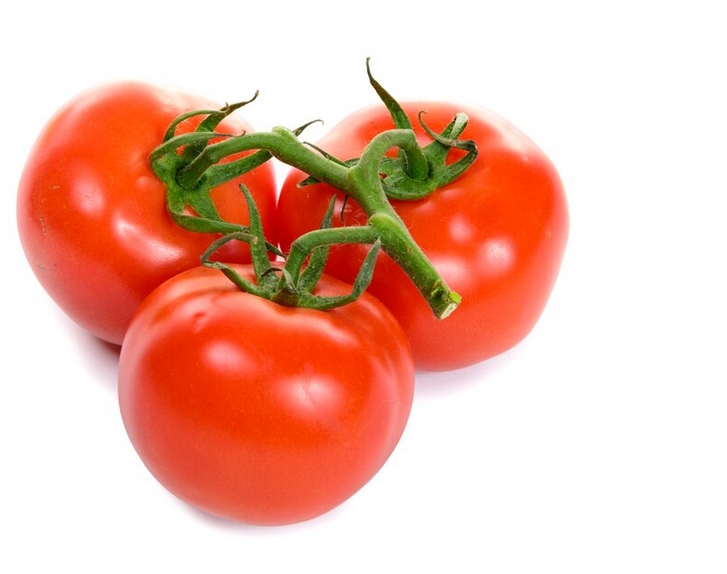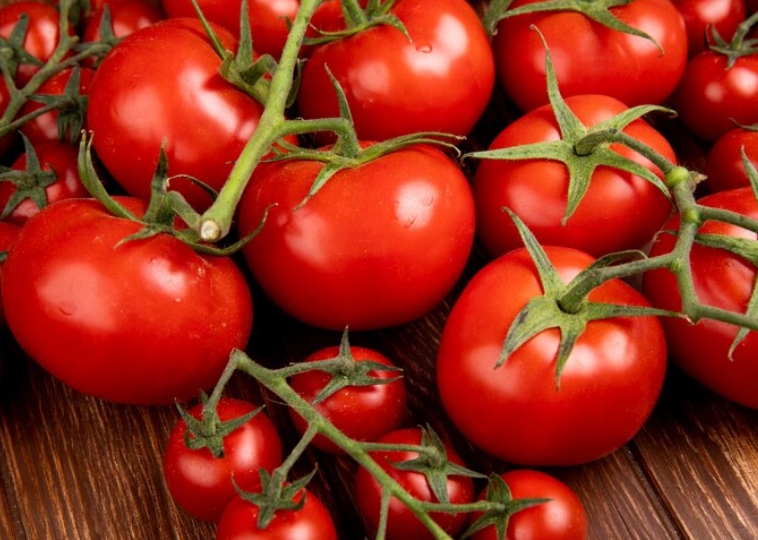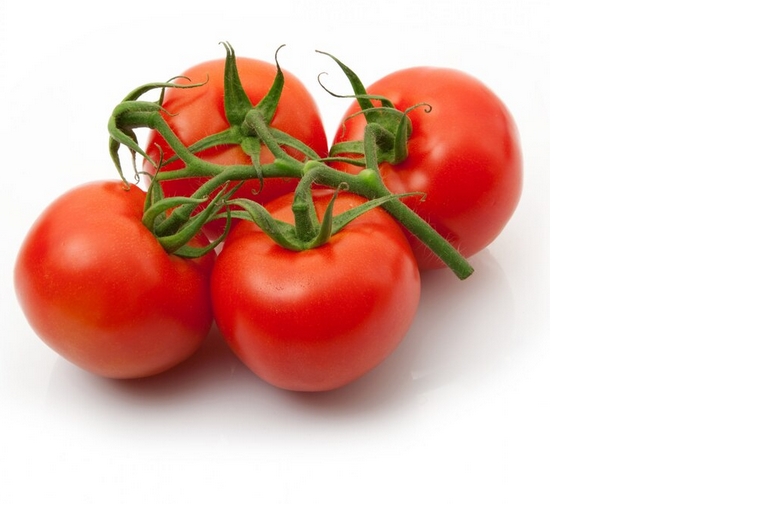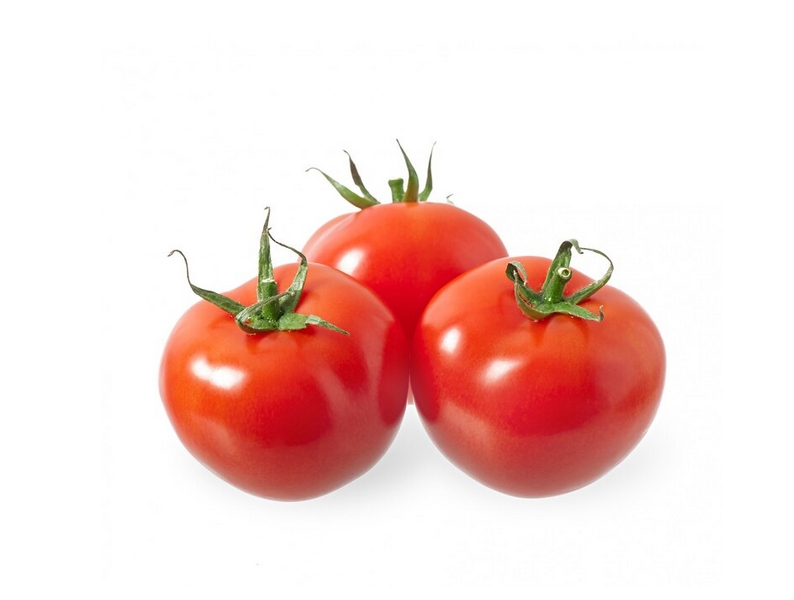From Ancient Origins to a Global Culinary Icon- The tomato ( Solanum lycopersicum) is one of the most popular and widely consumed fruits in the world, celebrated for its vibrant color, rich flavor, and incredible versatility. Although botanically classified as a fruit, the tomato is commonly treated as a vegetable in cooking. It plays a vital role in countless cuisines, ranging from simple salads to complex sauces, and is a staple ingredient in kitchens everywhere. This article delves into the fascinating history of the tomato, its botanical features, cultivation techniques, diverse varieties, culinary applications, and its enduring cultural significance.
Historical Background and Origins
The tomato’s story begins in the Americas, where it was first domesticated by indigenous peoples in what is now southern Mexico around 500 BCE. Early civilizations such as the Aztecs and Incas valued tomatoes for their edible fruits and incorporated them into their diet. The name “tomato” is derived from the Nahuatl word tomatl, reflecting its Mesoamerican roots.
The tomato was introduced to Europe in the early 16th century following the Spanish conquest of the Americas. Initially met with suspicion, it was often regarded as an ornamental curiosity rather than a food source, partly because of its membership in the nightshade family, which includes some toxic plants. Over time, however, the tomato gained acceptance, especially in Mediterranean countries like Italy and Spain, where it became an essential ingredient.
From Europe, tomatoes spread to Asia, Africa, and beyond, adapting to various climates and culinary traditions. Today, tomatoes are cultivated worldwide and are among the most important agricultural crops.

Botanical Characteristics
Tomatoes belong to the Solanaceae family, commonly known as the nightshade family, which also includes potatoes, eggplants, and peppers. The tomato plant is a perennial in its native habitat but is grown as an annual in most temperate regions due to its sensitivity to frost.
Tomato plants can grow as sprawling vines, bushes, or determinate types that stop growing after reaching a certain height. Their leaves are typically compound and hairy, and the plants produce yellow flowers that give way to the fruit.
The fruit of the tomato is classified botanically as a berry, characterized by its fleshy structure and seeds embedded within. Tomatoes vary greatly in size, shape, color, and flavor depending on the variety. Common colors include red, yellow, orange, green, purple, and even striped.
Varieties and Types of Tomatoes
The diversity of tomato varieties is vast, ranging from small cherry and grape tomatoes to large beefsteak types. These varieties are broadly categorized based on growth habit, fruit size, and use.
- Cherry Tomatoes: Small, round, and often sweet, cherry tomatoes are popular for salads, snacking, and garnishing. Their bite-sized nature and intense flavor make them a favorite among home gardeners and chefs alike.
- Grape Tomatoes: Similar in size to cherry tomatoes but more oval-shaped and less watery, grape tomatoes are prized for their firm texture and concentrated flavor.
- Beefsteak Tomatoes: Known for their large size and meaty texture, beefsteak tomatoes are ideal for slicing and using in sandwiches and burgers. They typically have fewer seeds and more flesh.
- Roma or Plum Tomatoes: These medium-sized, oval-shaped tomatoes are meatier and less juicy, making them excellent for sauces, pastes, and canning.
- Heirloom Tomatoes: These varieties are open-pollinated and have been passed down through generations. Heirloom tomatoes come in a wide range of colors and shapes and are cherished for their complex, unique flavors.
- Determinate vs. Indeterminate: Determinate tomatoes grow to a fixed size and produce fruit all at once, which is ideal for canning or processing. Indeterminate tomatoes continue growing and producing fruit throughout the growing season, favored for fresh eating.
Cultivation and Growing Conditions
Tomatoes thrive in warm, sunny climates and require well-drained, fertile soil rich in organic matter. They prefer temperatures between 70°F and 85°F (21°C to 29°C) and are sensitive to frost, making timing crucial in temperate zones.
Successful cultivation involves starting seeds indoors in cooler climates and transplanting seedlings outdoors once the risk of frost has passed. Tomatoes benefit from full sun exposure—at least six to eight hours daily—and consistent watering to avoid issues such as blossom-end rot.
Support structures such as cages, stakes, or trellises are commonly used to keep plants upright, improve air circulation, and facilitate harvesting. Pruning and pinching back suckers (side shoots) can help focus the plant’s energy on fruit production.
Tomato plants are susceptible to various pests and diseases, including aphids, tomato hornworms, blight, and fusarium wilt. Integrated pest management, crop rotation, and resistant varieties are common strategies to maintain healthy plants.

Culinary Uses and Preparation
Tomatoes are incredibly versatile in the kitchen and form the foundation of many culinary traditions worldwide. Their flavor profile ranges from sweet and tangy to rich and savory, making them suitable for an array of dishes.
- Raw Use: Fresh tomatoes are a common ingredient in salads, sandwiches, salsas, and garnishes. Cherry tomatoes and heirlooms add color and bursts of flavor to any dish.
- Cooking: Tomatoes are essential in cooked dishes such as soups, stews, and sauces. Italian cuisine famously utilizes tomatoes in pasta sauces like marinara and Bolognese, as well as in pizzas and bruschettas.
- Preserving: Tomatoes can be canned, dried, or made into sauces, pastes, and purees for long-term storage. Sun-dried tomatoes concentrate flavor and are a popular addition to Mediterranean dishes.
- Juices and Drinks: Tomato juice is a popular beverage and the base for cocktails such as the Bloody Mary.
- Condiments: Tomatoes are the main ingredient in ketchup and salsa, both beloved worldwide.
Cultural Significance
The tomato has evolved from a New World curiosity to a global culinary icon with rich cultural importance. It symbolizes the fusion of indigenous American agriculture with Old World cuisine and embodies the spread of crops across continents through exploration and trade.
In countries like Italy, Spain, and Mexico, the tomato is central to national food identities. Italian cuisine, in particular, has elevated tomato-based dishes to iconic status. In the United States, tomatoes have become ubiquitous in fast food and home cooking alike.
The tomato’s vibrant red color often associates it with themes of vitality, passion, and nourishment. Festivals celebrating tomatoes, such as Spain’s La Tomatina, highlight the fruit’s cultural role beyond the kitchen.
Economic Importance and Global Production
Tomatoes are among the world’s most valuable vegetable crops, grown on every continent except Antarctica. China, India, the United States, Turkey, and Egypt are leading producers. The global demand for fresh tomatoes and processed tomato products drives a multi-billion-dollar industry.
Modern agricultural methods, including greenhouse cultivation and hydroponics, have extended tomato growing seasons and increased yields. Advances in breeding have produced varieties with improved disease resistance, shelf life, and flavor.
Conclusion
The tomato stands as a remarkable example of a food that has transcended its humble origins to become an indispensable part of global cuisine and culture. From its roots in the Americas to its widespread cultivation and use today, the tomato’s journey reflects the interconnectedness of history, agriculture, and culinary art.
Its botanical complexity, diverse varieties, adaptability to different climates, and incredible culinary versatility ensure that the tomato will continue to delight and nourish people around the world for generations to come. Whether enjoyed fresh, cooked, or preserved, the tomato remains a symbol of flavor, color, and cultural richness in kitchens everywhere.

Health Benefits Of Tomatoes
1. Rich Source of Antioxidants
Tomatoes are packed with antioxidants, including vitamin C, lycopene, beta-carotene, and flavonoids. These antioxidants help neutralize harmful free radicals in the body, reducing oxidative stress and lowering the risk of chronic diseases such as cancer and heart disease. Lycopene, in particular, is known for its potent antioxidant properties and is responsible for the tomato’s vibrant red color.
2. Supports Heart Health
The lycopene and potassium content in tomatoes contribute significantly to cardiovascular health. Lycopene has been shown to reduce LDL cholesterol levels and improve blood vessel function, while potassium helps regulate blood pressure by balancing sodium levels. Together, these nutrients help reduce the risk of hypertension, heart attacks, and strokes.
3. Promotes Healthy Skin
Tomatoes contain vitamins C and A, which are essential for skin health. Vitamin C helps in collagen production, maintaining skin elasticity and reducing wrinkles, while lycopene protects the skin from UV damage and premature aging. Regular consumption of tomatoes may contribute to a clearer, more youthful complexion.
4. Aids in Cancer Prevention
Several studies suggest that the antioxidants in tomatoes, especially lycopene, have cancer-fighting properties. Lycopene may inhibit the growth of cancer cells and reduce the risk of prostate, lung, and stomach cancers. The presence of other phytonutrients also supports the body’s ability to prevent and repair cellular damage.
5. Supports Vision Health
Tomatoes are a good source of vitamin A and beta-carotene, both crucial for maintaining healthy vision. These nutrients help prevent night blindness and reduce the risk of age-related macular degeneration. The antioxidant lutein, also found in tomatoes, protects the eyes from harmful light exposure.
6. Helps Manage Blood Sugar Levels
Tomatoes have a low glycemic index and contain compounds that may help regulate blood sugar levels. The fiber in tomatoes slows the absorption of sugars into the bloodstream, which can be beneficial for people with diabetes or those at risk of developing the condition.
7. Boosts Immune Function
The vitamin C in tomatoes plays a vital role in strengthening the immune system. It enhances the production and function of white blood cells, which defend the body against infections. Additionally, the antioxidants help reduce inflammation and improve the body’s overall resilience to illness.
8. Supports Digestive Health
Tomatoes are high in water and dietary fiber, both of which aid digestion. Fiber promotes healthy bowel movements and prevents constipation, while the water content helps keep the digestive tract hydrated. Together, these factors support a healthy gut and reduce the risk of gastrointestinal problems.
9. Helps Maintain Bone Health
Tomatoes provide vitamin K and calcium, two nutrients essential for maintaining strong and healthy bones. Vitamin K supports bone mineralization and helps prevent osteoporosis by promoting calcium absorption. Regular consumption of tomatoes can be part of a balanced diet that supports bone density and reduces fracture risk.
10. Assists in Weight Management
Low in calories and high in fiber and water content, tomatoes are an excellent food for weight management. They promote a feeling of fullness and reduce overall calorie intake when included in meals. Their natural sweetness and versatility also make them a healthy, satisfying addition to a weight-conscious diet.

Frequently Asked Questions about Tomatoes
1. Is a tomato a fruit or a vegetable?
Botanically, a tomato is classified as a fruit because it develops from the flower of the tomato plant and contains seeds. More specifically, it is considered a berry. However, in culinary terms, tomatoes are treated as vegetables due to their savory flavor and usage in salads, sauces, and main dishes. This dual classification often causes confusion, but scientifically, tomatoes belong to the fruit family.
2. How should I store tomatoes to keep them fresh?
Tomatoes are best stored at room temperature away from direct sunlight to preserve their flavor and texture. Refrigeration can cause tomatoes to lose some of their taste and become mealy or mushy. However, once fully ripe, if you need to extend their shelf life, refrigeration is acceptable for a short period. It’s also good practice to keep tomatoes stem-side down to prevent bruising and moisture loss.
3. Why do some tomatoes taste bland or watery?
Tomato flavor depends on several factors including variety, ripeness, growing conditions, and storage. Tomatoes picked too early or stored in the refrigerator often lose their natural sugars and acidity, resulting in bland or watery fruit. Additionally, commercial tomatoes grown for durability and shelf life may sacrifice flavor. For the best taste, look for ripe tomatoes from local sources or homegrown varieties.
4. What are heirloom tomatoes, and how are they different from regular tomatoes?
Heirloom tomatoes are open-pollinated varieties passed down through generations due to their unique flavors, shapes, and colors. Unlike many hybrid tomatoes bred for uniformity and shelf life, heirlooms offer greater diversity and often richer taste. Because they aren’t bred for long-distance shipping, heirloom tomatoes may be more delicate but prized by chefs and food enthusiasts for their exceptional flavor.
5. Can I eat tomato seeds?
Yes, tomato seeds are edible and commonly consumed along with the flesh of the tomato. They contain nutrients and fiber that contribute to the fruit’s health benefits. However, some people prefer to remove seeds in certain recipes to achieve a smoother texture, such as in sauces or soups. There is no harm in eating tomato seeds, and they add to the overall nutritional profile.
6. Are green tomatoes safe to eat?
Green tomatoes refer to either unripe red tomatoes or specific tomato varieties that stay green when ripe. While unripe green tomatoes are safe to eat when cooked properly, they contain higher levels of tomatine, a compound that can be mildly toxic in large amounts. Cooking reduces tomatine content, making fried or pickled green tomatoes a popular and safe delicacy.
7. How do tomatoes benefit a garden or other plants?
Tomatoes can be part of a beneficial garden ecosystem. They attract pollinators like bees when in flower, supporting the pollination of other plants. Additionally, their large leaves provide shade that can help protect more sensitive plants from harsh sunlight. However, tomatoes are susceptible to certain pests and diseases, so crop rotation and companion planting are important to maintain garden health.
8. What is the difference between determinate and indeterminate tomato plants?
Determinate tomato plants grow to a fixed height and produce all their fruit in a short period, making them ideal for gardeners who want a large harvest at once for canning or preserving. Indeterminate tomato plants, on the other hand, continue to grow and produce fruit throughout the growing season until frost kills them. Indeterminate varieties require staking or caging due to their sprawling growth habit.
9. Can tomatoes be grown indoors?
Yes, tomatoes can be successfully grown indoors with proper care. They need sufficient light, ideally from a south-facing window or supplemental grow lights, and warmth to thrive. Container-grown tomatoes require well-draining soil, regular watering, and fertilization. Smaller varieties like cherry or patio tomatoes are especially suitable for indoor cultivation, allowing fresh tomatoes year-round.
10. Why do tomatoes sometimes crack or split?
Tomato cracking or splitting usually occurs due to irregular watering or sudden changes in moisture levels. When a tomato plant receives a lot of water after a dry spell, the fruit can swell quickly and the skin may split because it cannot expand fast enough. To prevent cracking, consistent watering and mulching to retain soil moisture are recommended.





